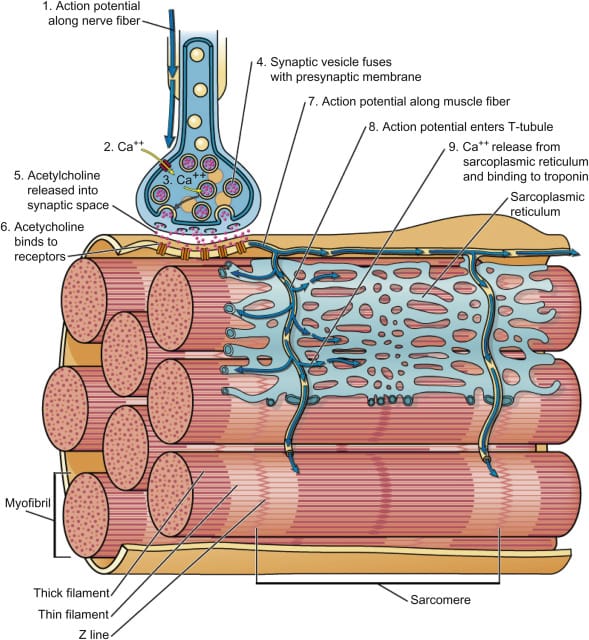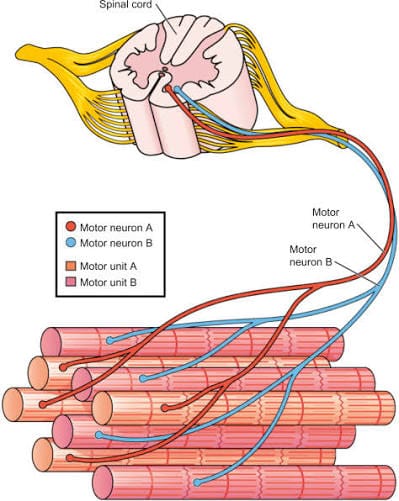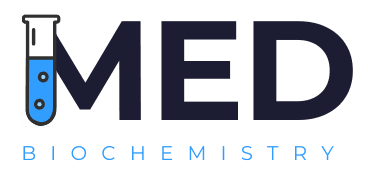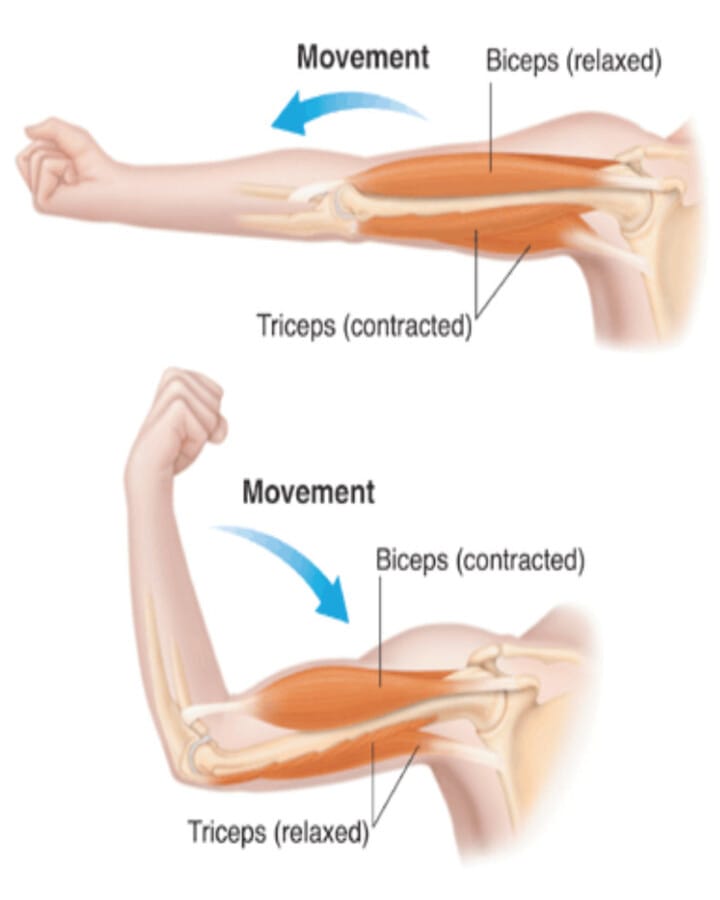
Image Credit – Hema
Muscle contraction is a vital biological process that allows the body to perform every kind of movement, from a heartbeat to a sprint. It involves complex interactions between cells, proteins, and electrical signals that work together to convert chemical energy into mechanical force. Understanding how muscle contraction works not only helps us appreciate how our bodies move but also aids in understanding exercise, muscle growth, and even medical conditions related to muscular function.
Muscle Contraction – Understanding the Science Behind Movement

Muscle contraction begins at the cellular level. The functional unit of a muscle fiber is called a sarcomere, which contains two main types of protein filaments—actin (thin filament) and myosin (thick filament). When a muscle receives a signal from the nervous system, these filaments slide past each other, shortening the muscle fiber and creating movement. This process is known as the sliding filament theory, which forms the foundation of modern muscle physiology.
The process of muscle contraction starts with a signal from the brain that travels through motor neurons to the muscle fibers. This signal reaches the neuromuscular junction, where the neurotransmitter acetylcholine is released. Acetylcholine binds to receptors on the muscle cell membrane, triggering an electrical impulse that travels deep into the muscle fiber through structures called T-tubules. This electrical signal causes the sarcoplasmic reticulum to release calcium ions (Ca²⁺) into the cytoplasm of the muscle cell.
Calcium plays a crucial role in muscle contraction. When calcium ions bind to a protein called troponin, it causes a change in the shape of another protein, tropomyosin, exposing binding sites on the actin filaments. This allows the myosin heads to attach to actin, forming cross-bridges. Once the cross-bridge is formed, the myosin head pulls the actin filament inward, using energy from adenosine triphosphate (ATP). This repeated attachment and detachment of myosin heads cause the muscle fiber to shorten, leading to contraction.
There are three main types of muscle contraction—isotonic, isometric, and eccentric.
- In isotonic contraction, the muscle changes length to produce movement, such as lifting a dumbbell.
- In isometric contraction, the muscle generates force without changing its length, like holding a plank position.
- In eccentric contraction, the muscle lengthens while under tension, such as when lowering a weight slowly.
Each type of contraction plays an important role in strength training, posture maintenance, and daily physical activities.
Energy is essential for muscle contraction. ATP provides the power for the myosin heads to detach and reset during each contraction cycle. When ATP levels drop, muscles can no longer contract effectively, leading to fatigue. During intense exercise, the body switches from aerobic to anaerobic respiration, producing energy quickly but less efficiently, which leads to the buildup of lactic acid. This causes temporary muscle soreness and fatigue.
After the contraction, calcium ions are pumped back into the sarcoplasmic reticulum, and the muscle relaxes. The cycle can then start again when a new signal arrives. The coordination of thousands of muscle fibers contracting and relaxing together creates smooth, controlled movement.
Understanding muscle contraction is also vital in sports, rehabilitation, and medicine. Athletes train to enhance muscle efficiency and endurance, while physiotherapists use this knowledge to design recovery exercises for injuries. Additionally, medical researchers study muscle contraction to treat disorders like muscular dystrophy, cramps, or paralysis, where normal muscle function is impaired.
In conclusion, muscle contraction is a remarkable process that showcases the harmony between the nervous and muscular systems. Every motion we make, from the beating of our heart to the lifting of a finger, relies on this sophisticated mechanism. By studying how muscles contract, we gain insight into human movement, strength, and the intricate design of the human body.
Frequently Asked Questions
What is Muscle Contraction?
Muscle contraction is the process by which muscle fibers shorten and generate force, allowing the body to move and perform physical actions.
What causes Muscle Contraction?
Muscle contraction occurs when the brain sends electrical signals through nerves, releasing calcium ions in the muscle cells, which trigger actin and myosin interaction to create movement.
What are the types of Muscle Contraction?
The main types of muscle contraction are isotonic, isometric, and eccentric, each responsible for different types of movement and muscle control.

